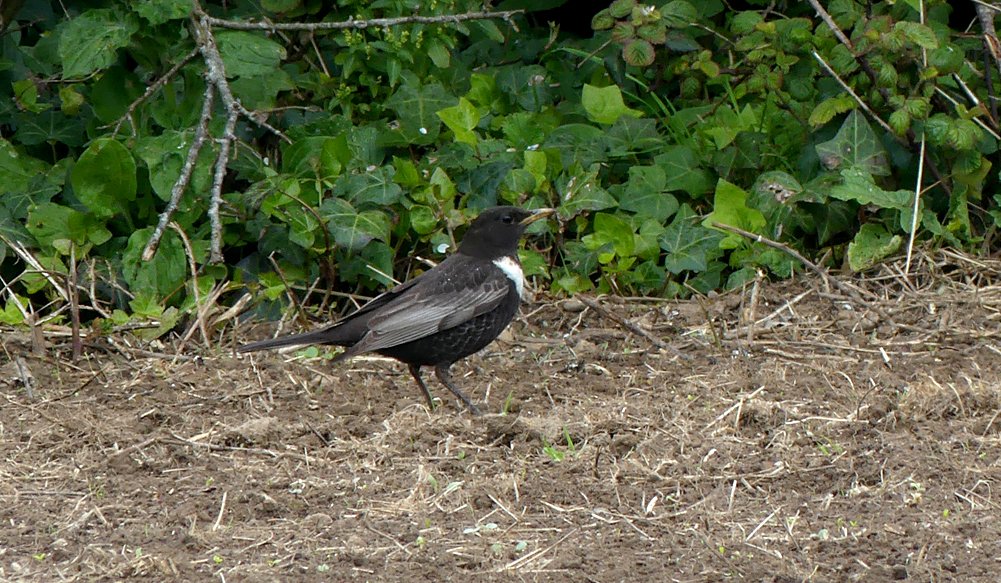April 2023 part ii
/After the brilliant first half of April, the rest of the month continued to be excellent for land migrants - one of the best springs I can remember for numbers of birds for ages. There wasn’t anything rare to see but the birding felt great.
I had bought a new torch for crepuscular adventures and went to try it out at L’Ancresse on 15th. I soon found out it was ridiculously powerful for a few tiny LEDs and I could spotlight objects 100s of metres away! I spotlighted Barn Owl twice without too much trouble. On 16th April I finally got Sand Martin for the year at Rousse and the Manx Shearwaters were starting to build up off Pleinmont. I went out on 17th and there were plenty of Wheatears around but not so much variety - 2 Yellow Wagtails on the beach at Pulias and a couple of fly-by Whimbrels at Rousse. Up at Pleinmont, there were a couple more Yellow Wagtails, my first Whitethroat of the year and a singing Skylark. I thought I may have had an early Hobby but I couldn’t quite pin it down.
I saw a superb male Whinchat at Pleinmont on 18th and I spent some time out in the afternoon of 19th and saw a decent selection including a female Redstart feeding with phylloscs in the beachside Tamarisks at Lihou headland, the first Swift of the year swooping over the sea wall at Rocquaine, a flock of at least 10 Yellow Wagtails following sheep at Mont Herault, and Cetti’s Warblers singing in the valleys at Pezeries and Prevote. The Cetti’s seem to be extending out away from their traditional marshy sites and have recently been seen/heard in a few of the densely vegetated valleys along the south coast. On the continent they seem to occur in more variety of habitats than they do here. Perhaps they just need populations to grow enough to spread out of the wetlands.
Redstart - Lihou Headland, 19 Apr 23
Popping into Pulias on 20th, I saw straight away that there had been a large influx of Wheatears on the island. There were at least 30 at Pulias alone, with at least 20 at Portinfer and 15 at Rousse - so 65 birds along a short stretch of coastline. Later in the day, I had at least 30 at Fort Doyle and about the same number at Jaonneuse. Driving around and popping off at a few spots, I estimate that I saw at least 200 Wheatear myself during the day, so probably huge amounts across the whole island. It was super to see such numbers. Other species seen that day were a couple of Yellow Wagtails, a Ring Ouzel behind the tennis courts at Jaonneuse, and a male Redstart on the cliff edge at Pleinmont from the car.
Wheatear - Pulias, 20 Apr 23
With such good migration, I was keen to get out in the field asap, and I had another chance on 22nd April. Up at Pleinmont, the Wheatear numbers had diminished a little but there were other birds to see, with 3 Ring Ouzels, 3 Redstarts, 2 Whinchats and up to 20 Willow Warblers around the top fields, all showing really well. A visit to Grand Pre in the evening revealed my first Sedge Warbler of the year.
Wheatear - Pleinmont, 22 Apr 23
Ring Ouzel - Pleinmont, 22 Apr 23
Ring Ouzel - Pleinmont, 22 Apr 23
The next week I was back at work but still managed to pick up a few migrants. A Tree Pipit showed well on the plateau at Fort Hommet on 24th April, I had a Yellow Wagtail and a Common Sandpiper at Pulias on 27th, with a Redstart at Rousse on 28th.
Tree Pipit - Ft Hommet, 24 Apr 23
Tree Pipit - Ft Hommet, 24 Apr 23
Dunnock - Pleinmont, 17 Apr 23
Peregrines - 17 Apr 23
My first job on returning to work was actually to join the school year 9 Geography trip to London, which was great - I don’t get to London more or less ever. Wildlife-wise it was, not unexpectedly, quiet, as it was mainly walking around the urban environment and visiting museums and the like (see a selection of photos below). We did walk through the Olympic Park briefly where I saw a rather moth-eaten Jay and a rather splendid Aythya hybrid sleeping on a pond. There were some very close breeding-plumaged Great Crested Grebes in Docklands, but I was disappointed not to see any parakeets!
Aythya hybrid - Olympic Park, London, 25 Apr 23
Great Crested Grebe - Docklands, London, 25 Apr 23































